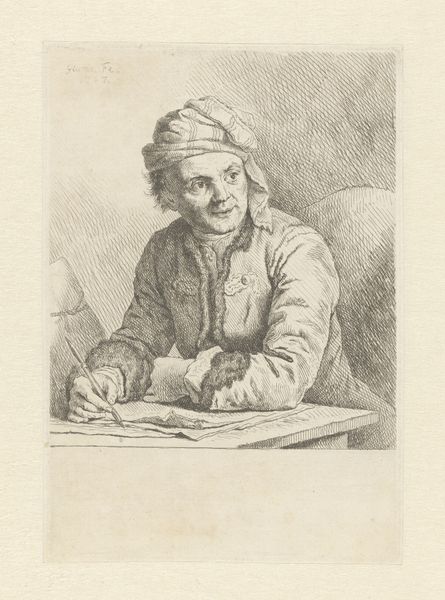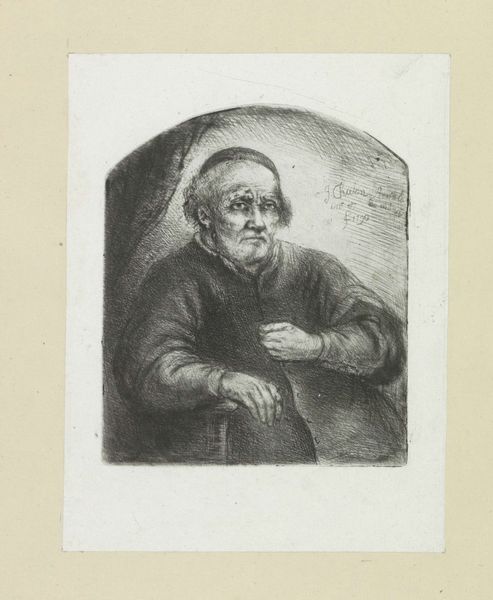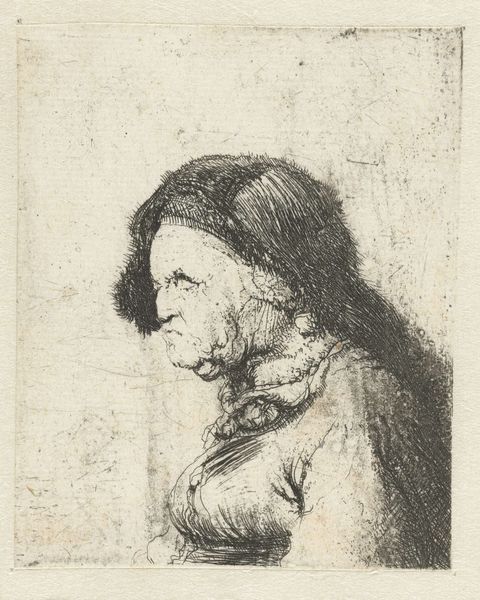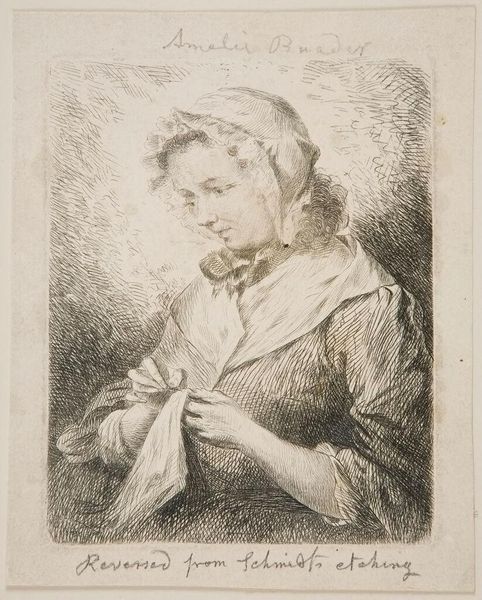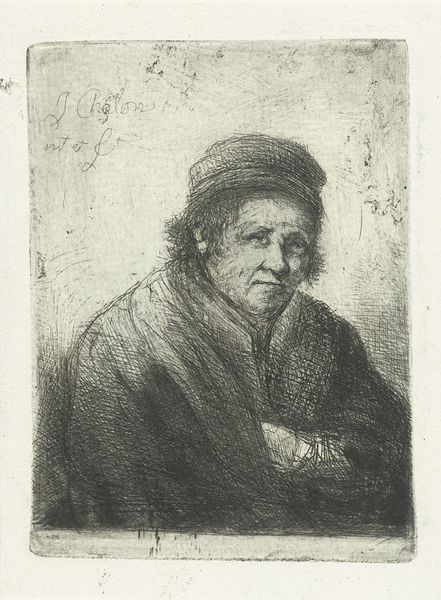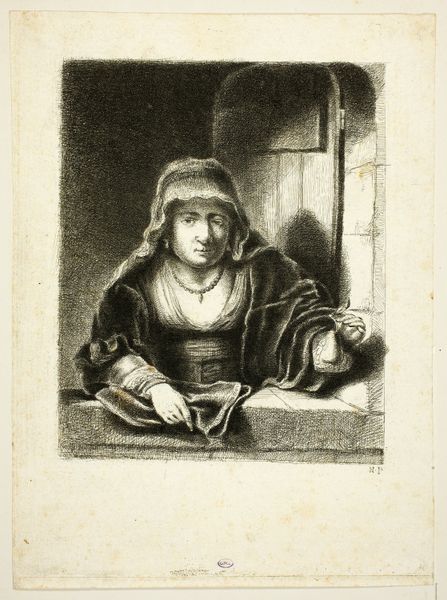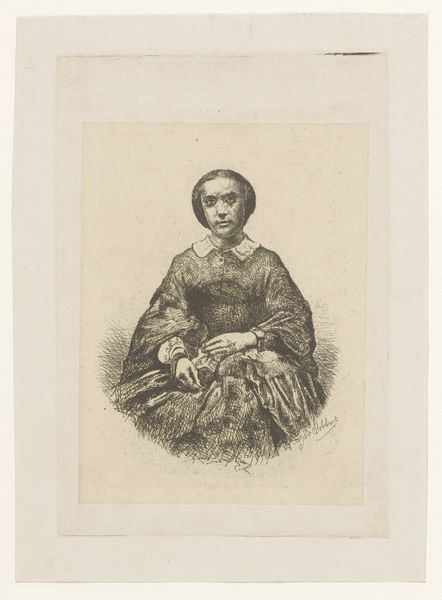
drawing, paper, engraving
#
portrait
#
drawing
#
neoclacissism
#
old engraving style
#
paper
#
pencil drawing
#
genre-painting
#
engraving
Dimensions: height 62 mm, width 55 mm
Copyright: Rijks Museum: Open Domain
Editor: This is "Lezende Vrouw," or "Reading Woman," created around 1772 by Johann Andreas Benjamin Nothnagel. It's an engraving, and seeing it, I’m struck by the intricate lines that bring out texture, especially on her clothing. How would you interpret this piece? Curator: Consider the process itself. Engraving in the 18th century wasn't simply about replicating an image, but a highly skilled craft. Look at how Nothnagel uses lines of varying thickness and density. What kind of labor do you think it required to achieve that level of detail on a small metal plate before even transferring it to paper? Editor: So, more than just admiring the subject, you're asking about the sheer physical effort? Curator: Precisely. And what materials were readily available, and what socio-economic class had access to them? The paper itself – was it mass produced, or hand-made? Even the ink becomes relevant. We’re examining the means of production and consumption, not just aesthetic value. Consider the act of reading during that period too—literacy, access to books—it was all stratified. This wasn’t just a picture of a woman reading; it’s a snapshot of material culture. Editor: That really changes how I see it. I was focused on the “who” but I should think about the “how” and “why” materials informed the artwork. Curator: Exactly. Thinking about how the materials used shapes what was represented encourages us to look deeper. Editor: It’s fascinating how much the materials and the process open up the narrative. Curator: It highlights the importance of interrogating not just the “what” but also the “how” of art.
Comments
No comments
Be the first to comment and join the conversation on the ultimate creative platform.



